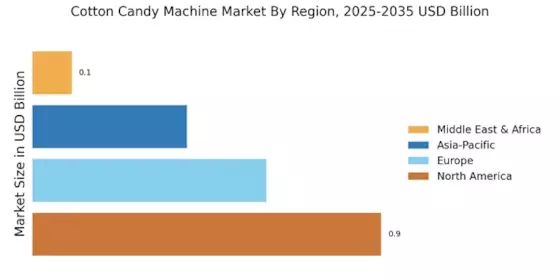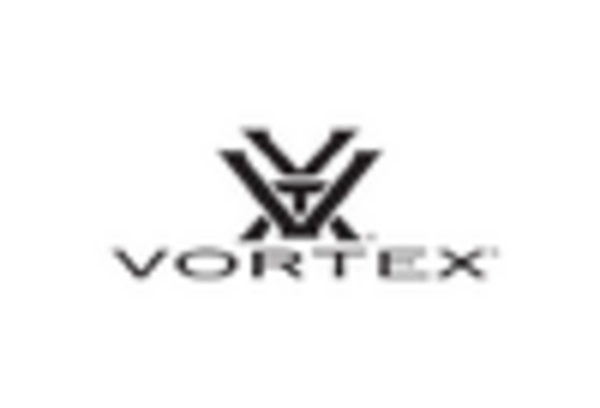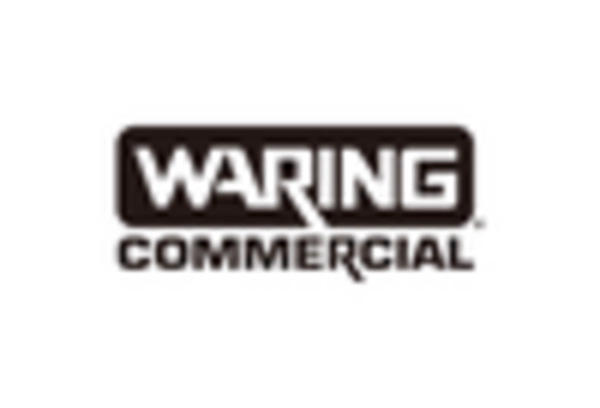Expansion of Food Service Outlets
The expansion of food service outlets, including food trucks, kiosks, and pop-up shops, is significantly influencing the cotton candy machine Market. As the food service sector continues to evolve, more entrepreneurs are entering the market, seeking innovative ways to attract customers. Cotton candy machines offer a unique selling proposition, allowing vendors to create an engaging experience for patrons. Recent data indicates that the food service industry is expected to grow by 5% annually, which could lead to an increased number of establishments offering cotton candy. This trend suggests that the Cotton Candy Machine Market will likely see a surge in demand as more food service operators incorporate cotton candy into their offerings.
Innovations in Machine Technology
Innovations in machine technology are transforming the Cotton Candy Machine Market, making it more efficient and user-friendly. Recent advancements have led to the development of machines that are not only faster but also capable of producing various flavors and colors of cotton candy. This technological evolution appeals to both commercial vendors and home users, expanding the market reach. Data suggests that the introduction of smart cotton candy machines, which can be controlled via mobile applications, is gaining traction. Such innovations may enhance the consumer experience and drive sales, indicating a positive trajectory for the Cotton Candy Machine Market as it adapts to modern consumer preferences.
Growing Popularity of Outdoor Events
The growing popularity of outdoor events, such as music festivals, sporting events, and community gatherings, serves as a catalyst for the Cotton Candy Machine Market. These events often feature a variety of food vendors, and cotton candy stands are a staple attraction due to their visual appeal and nostalgic value. Market analysis indicates that outdoor events are expected to increase in frequency, with attendance figures rising steadily. This trend may lead to a higher demand for cotton candy machines, as event organizers seek to provide diverse food options. Consequently, the Cotton Candy Machine Market is likely to experience growth as vendors capitalize on the opportunity to cater to large crowds at these events.
Rising Demand for Confectionery Products
The increasing demand for confectionery products is a primary driver of the Cotton Candy Machine Market. As consumers seek unique and nostalgic treats, cotton candy has gained popularity at various events, including fairs, festivals, and parties. According to industry reports, the confectionery market is projected to grow at a compound annual growth rate of approximately 4.5% over the next few years. This growth is likely to boost the demand for cotton candy machines, as vendors and entrepreneurs look to capitalize on this trend. The Cotton Candy Machine Market is thus positioned to benefit from the rising consumer interest in sweet treats, particularly among younger demographics who are drawn to visually appealing and fun food options.
Increased Focus on Healthier Alternatives
The increased focus on healthier alternatives in the food industry is influencing the Cotton Candy Machine Market. As consumers become more health-conscious, there is a growing demand for cotton candy made from organic or natural ingredients. This shift presents an opportunity for manufacturers to innovate and create healthier versions of traditional cotton candy. Market Research Future indicates that products labeled as organic or free from artificial additives are experiencing higher sales growth. This trend suggests that the Cotton Candy Machine Market could benefit from the introduction of healthier cotton candy options, appealing to a broader audience while aligning with contemporary dietary preferences.

















